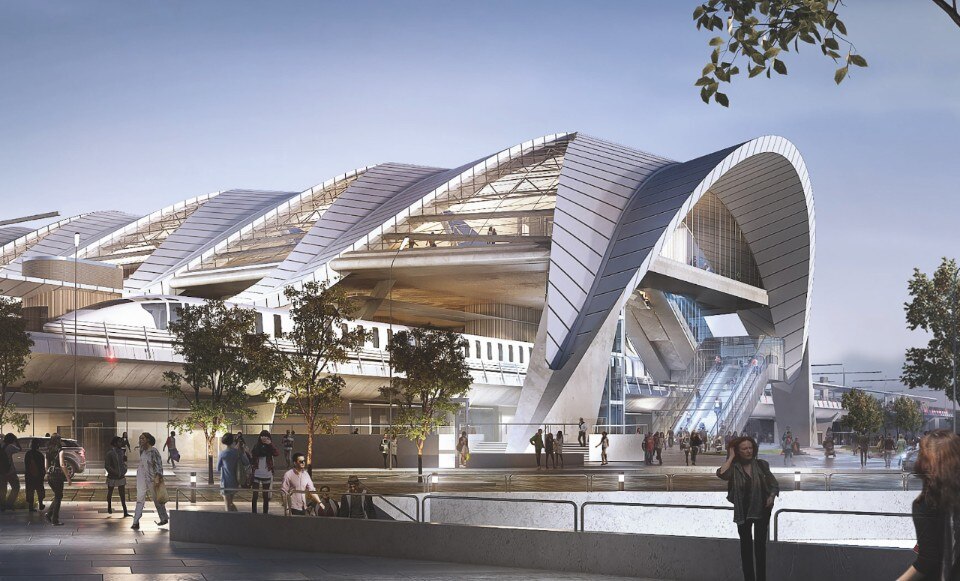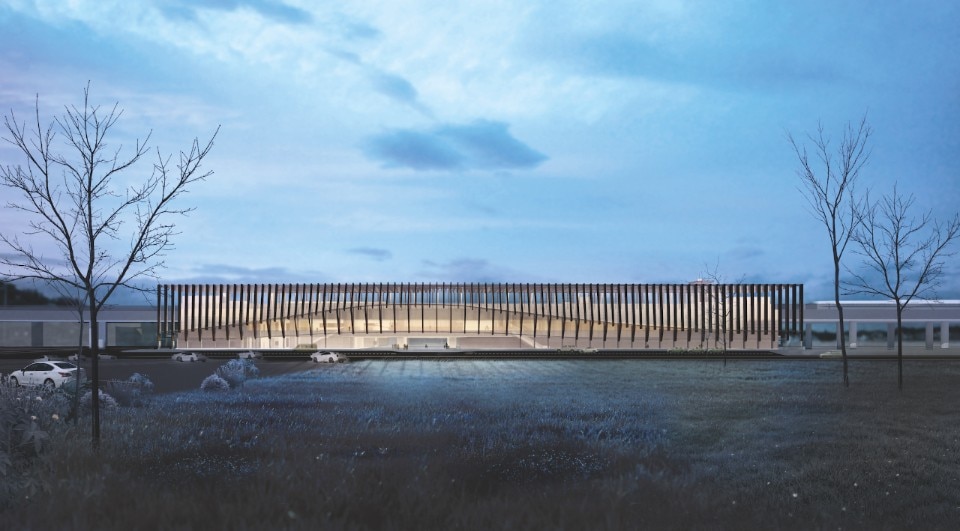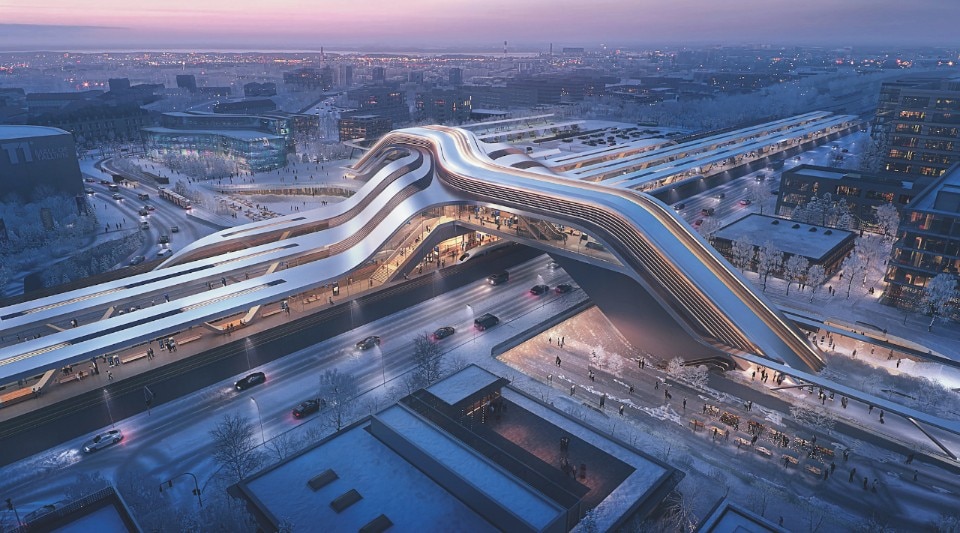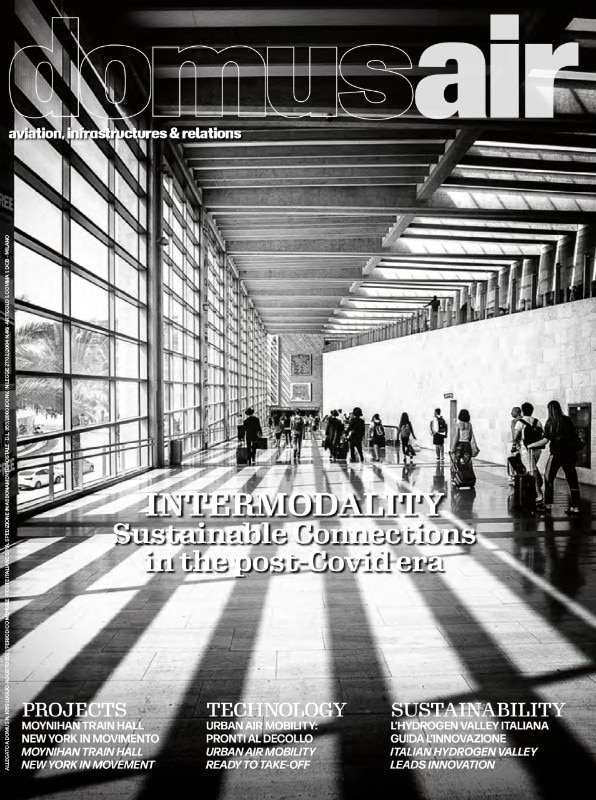This article was originally published on Domus Air special issue, July/August 2021.
“Not failure, but low aim, is crime” is a maxim once formulated by James Russell Lowell, an icon of American Romanticism and one of the great Fireside Poets, and later popularized by the perfectionist Bruce Lee. It lucidly encapsulates the immense opportunity that Rail Baltica – one of Europe’s greenfield flagship megaprojects – affords. An opportunity that could easily squandered by aiming too low. As an emerging mobility and logistics platform connected by a greenfield UIC-gauge, electrified, ERTMS-equipped (the system of standards for management and interoperation of signalling for railways by the European Union), mixed-traffic railway line, Rail Baltica must lay the foundation for a multimodally integrated connectivity backbone and, as such, anchor a new economic corridor that creates lasting socio-economic benefits to the Baltic region and beyond. Achieving a new standard of multimodal integration and unlocking the potential to deliver transformational socio-economic impacts are, therefore, two key challenges at the heart of the Baltic region’s ‘project of the century’.

Multimodal integration
In a modern deeply interconnected world, railway infrastructure development must not be viewed in isolation. The rare 21st century displays of greenfield railway development are characterized by a challenge of integrating rail into existing and highly complex mobility and logistics ecosystems. Rail Baltica is no exception. In our pursuit to unlock its full potential, we seek every opportunity to ensure optimum multimodal integration on all key levels: physical, commercial, and digital.
On the physical level, there are few opportunities for greenfield transport infrastructure, that it links airports, seaports, road-rail intermodal terminals, public transport hubs and micro-mobility options and fewer still for an economic corridor which develops from that new infrastructure so. With seven international stations, numerous regional stations, direct connections to four main airports, a web of maritime and dry port intermodal facilities, Rail Baltica – currently in advanced design phase – is one such exceptional opportunity, aiming to deliver the missing thread in the tapestry of multimodal connectivity in the Baltics and beyond.
Railway infrastructure development must not be viewed in isolation
From the commercial perspective, it is critical to ensure that the physical infrastructure features, capabilities, and functionalities can provide a sustainable foundation for future transport and mobility services: offerings could include single-ticket multimodal journeys for passengers, transparent intermodal freight, or systems to support seamless end-to-end “mobility as a service” operators. For example, for integration with passenger air travel, integrated check-in and baggage handling services are intended to be developed, with end-to-end tracking of passenger luggage, and also the potential for using those same facilities for other services such as links to passenger ferry terminals or potentially hotel connections. Passenger baggage solutions can also have synergies with express freight and e-commerce distribution. The “Mercitalia Fast” service in Italy, for example, uses converted passenger trains for carrying freight at passenger service speeds, and this approach could work well on Rail Baltica. Similarly, Rail Baltica freight terminals should be designed and equipped to enable seamless transition of cargo across different transport modes, including between the two rail gauges – with 1435mm (standard gauge) services on Rail Baltica and the broader 1520mm gauge used by the existing railways in the region. About digital integration, the collaborative decision making (A-CDM) approach of the aviation sector is already being examined by the maritime industry and could also be considered for rail. The goal is to enable the seamless integration through collaborative environments, with, for example, airlines and rail operators able to offer combined services (single ticket journey) to passengers, and freight operators, able to expand their footprint from a single location to the entire corridor, all on data services designed for a “digital native” environment, rather than needing legacy systems with added digital processes.

Socio-economic impact
Enabling such seamless and multimodally-synchronized passenger mobility and a more efficient freight value chain with rail at its core should, in turn, unlock Rail Baltica’s true potential to catalyze socio-economic development with both quantifiable benefits, as well as longer term induced impacts and multiplier effects. It is projected that over first 30 years of its operations, Rail Baltica will save more than 400 lives though increased travel safety; slash more than 5 million passenger travel hours each year – the equivalent of around 600 years; deliver more than 6 billion euro worth of environmental benefits, not least by shifting at least 30% of long-haul truck traffic to rail – all while radically transforming Baltic economic geography by providing accessible, digitally-enabled and sustainable connectivity for more than 5 million passengers and 15 million tons of mostly high value cargo. Rail Baltica, therefore, aspires to become both a super-connector bringing the Baltic States closer together, as well as a new trade artery to foster a new North-East European economic corridor.
Opening image: the project (by Zaha Hadid Architects) for Ülemiste station in Tallin, the capital of Estonia, terminal of Rail Baltica



